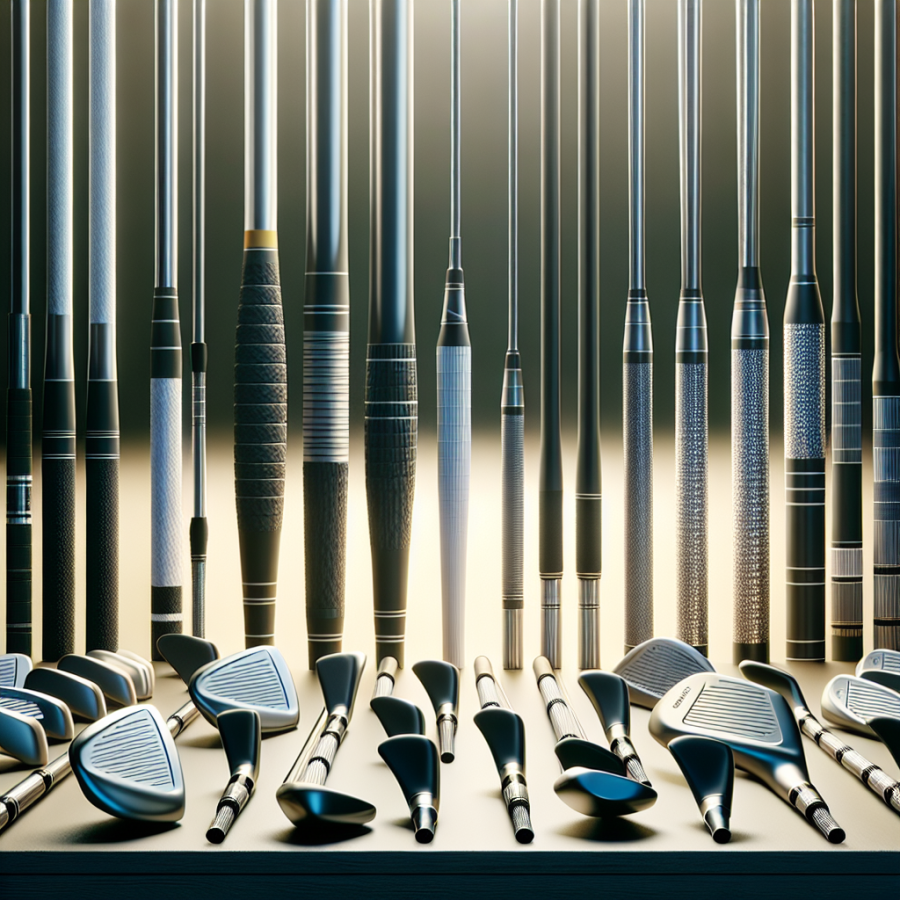Unraveling the Basics: Understanding Different Types of Golf Shafts
When delving into the world of golf, one of the most critical aspects to consider is your golf shaft. This is the engine of the club, and it's what delivers the power from your swing to the ball. Understanding the different types of golf shafts can help improve your game significantly.
Steel Shafts
The first type we're going to discuss are steel shafts. Steel shafts are generally considered to be the more durable alternative to their counterparts. They offer the benefits of a more consistent type of play as they don't flex as much as other shafts in the golfing world. This consistent play is particularly beneficial if your swing is already fairly precise or quick. On the downside, the stiffness of a steel shaft can mean they are less forgiving than their counterparts if you have a softer swing. Steel shafts tend to be less expensive than other shaft types.
Graphite Shafts
Next, we have graphite shafts. These are considered the gentler, more flexible alternative to steel shafts and are generally more suited to players whose swings are slower or who are just getting started. Graphite shafts are lighter than steel, which can enable higher swing speeds and more distance. Generally, beginners or senior players tend to opt for graphite shafts as they're more forgiving to slower swings. However, graphite shafts are usually more expensive than their steel counterparts.
Multi-Material Shafts
These shafts are a blend of both steel and graphite. They aim to provide the best of both worlds by offering the consistent performance of steel at the lower end of the shaft, while the graphite in the upper half provides a more flexible and forgiving swing. This translates to a balance between distance and control. These types of shafts can be slightly costlier due to their composite nature.
Nanofuse Shafts
Nanofuse shafts are the newest type of golf shaft. They are composed of a mix of steel, carbon, and a unique nanocrystalline alloy. This makes them incredibly light and strong. They offer great performance, with a balance between control, distance, and feel. However, they are the most expensive type of shaft due to their advanced technology.
In conclusion, there's no definitive answer as to which golf shaft is the best. It all depends on your playing style, physical ability, and budget. Ideally, you want to choose a shaft that complements your swing.
Read also:
Preview: Exciting Golf Tournaments Happening This Weekend
Tips and Considerations: Selecting the Ideal Golf Shaft for Your Game
When it comes to selecting the ideal golf shaft for your game, there are a number of factors to consider. These range from your individual playing style and experience level, to the unique characteristics and advantages offered by different shaft materials and designs. Here are some key tips and considerations to keep in mind while you’re on the lookout for your perfect golf shaft match.
1. Consider Your Swing Speed: One of the most important factors that will determine which golf shaft is right for you is your swing speed. Faster swing speeds require stiffer shafts while slower swing speeds benefit from more flexible shafts. This is because the shaft's bendability can significantly impact the trajectory, speed, and accuracy of your shot.
2. Know Your Skill Level: The ideal golf shaft for you also depends on your skill level. Novice golfers might find a shaft with more flexibility easier to handle because it can help compensate for any inconsistencies in their swing. More experienced golfers, on the other hand, might choose a stiffer shaft which allows for more control and precision.
3. Understand Shaft Flex Ratings: Golf shafts come with different flex ratings ranging from extra stiff (X), stiff (S), regular (R), senior (A), to ladies (L). These flex ratings represent the shaft’s ability to bend during the swing. Make sure you use your swing speed and skill level as a yardstick to select the appropriate flex rating.
4. Understand the Shaft Material: The two most common materials used in golf shafts are steel and graphite. Steel shafts are typically heavier, offering more accuracy. Graphite shafts are lighter, boosting swing speed and distance. Your choice will depend on what you prioritize – more distance or more accuracy.
5. Note the Shaft Length: The length of the shaft will also impact your performance. Shorter shafts allow for more control, while longer ones may enable you to achieve more distance, but they can be harder to control. Your height can also affect the ideal shaft length for you.
6. Consider the Tip and Butt Diameter: The diameter of the shaft at the tip and butt can affect its performance. Narrower tips can increase shot distance, while wider tips are better for control. Similarly, larger butt diameters may enhance shot strength, while smaller ones might give more control.
7. Seek Professional Fitting: Finally, consider seeking professional fitting services for your golf shaft.




